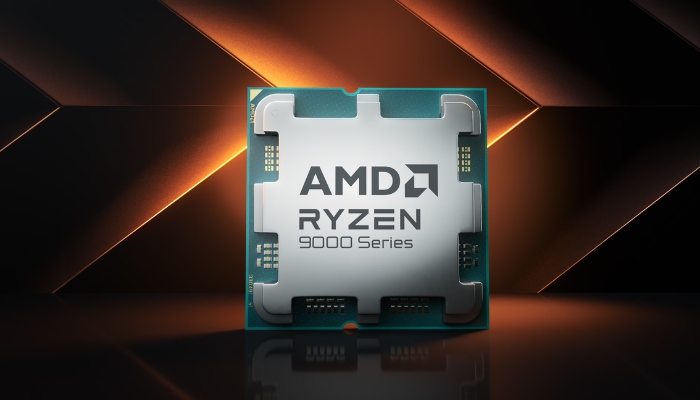
Advanced Micro Devices (AMD) has showcased a lineup of new processors and graphic cards at the Consumer Electronics Show (CES) 2025 in Las Vegas.
These new chips are designed to power a wide range of devices, including desktops, laptops, and gaming handhelds.
Gadinsider has compiled a list of all the processors announced by AMD at CES 2025.
Ryzen 9 9950X3D chip for gaming
Building on its momentum in the CPU market, where it had a 28.7% share in Q3 2024, AMD has introduced the Ryzen 9 9950X3D, a high-performance processor aimed at gamers and creators.
This 16-core chip boasts a clock speed of up to 5.7GHz and delivers an average performance gain of 8% in popular games such as Hogwarts Legacy, compared to its predecessor.
Ryzen 9 9900X3D processor
In addition to the Ryzen 9 9950X3D, AMD also announced the Ryzen 9 9900X3D, a lower-tier processor with 12 cores clocked at up to 5.5GHz.
“Fire Range" lineup
For the mid-range laptop market, AMD introduced the "Fire Range" lineup, featuring the Ryzen 9 9850HX, 9955HX, and 9955HX3D.
These processors offer 12 to 16 cores clocked at between 5.2GHz and 5.4GHz.
AI PC chips
Moreover, AMD unveiled its Ryzen AI 300 series and Ryzen AI Max series, designed to power the next generation of Copilot+ PCs with AI-accelerated Windows 11 features.
These chipsets feature a dedicated neural processing unit (NPU) to accelerate AI workloads and deliver improved performance.
Ryzen 200 series
Furthermore, AMD has announced the Ryzen 200 series, targeting budget-friendly devices, such as the Ryzen Z2 series, designed for handheld PCs like the Steam Deck.
Graphic cards
AMD also revealed its next-generation Radeon RX 9070 XT and Radeon RX 9070 GPUs, based on the RDNA 4 architecture.
These graphic cards promise improved ray tracing performance, better media-encoding quality, and enhanced AI acceleration.
All these processors are expected to ship during the first quarter of 2025.














